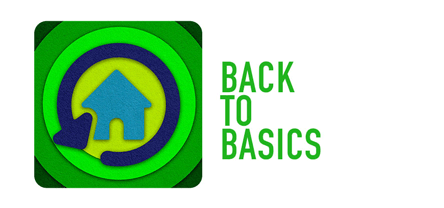 There’s so much noise out there on how to navigate a challenging market. This April, let Inman help you cut through the clutter to make smart business decisions in real time. All month long, we’re taking it Back to Basics and finding out how real estate pros are evolving their systems and investing personally and professionally to drive growth.
There’s so much noise out there on how to navigate a challenging market. This April, let Inman help you cut through the clutter to make smart business decisions in real time. All month long, we’re taking it Back to Basics and finding out how real estate pros are evolving their systems and investing personally and professionally to drive growth.
This post was last updated April 24, 2023.
What color should you use for your logo? What color tie should you wear to that big meeting? Whether you realize it or not, color has an effect on the way you and your brand are perceived, and even on your energy level. Everything from the paint color in your office to the dominant color in your Instagram feed tells potential clients something about you.
Ready to think past the old-school red or blue dichotomy? Color can say so much more. Find out what your current color scheme is telling people and how you can change up the narrative.
Emotional perceptions of color
You may think you know what’s suggested by various colors. After all, red equals dynamic, passionate and powerful, so it’s a natural color for your headshot outfit or logo, right? Well, maybe not.
Here are just a few of the effects red has on the viewer or wearer according to a recent survey of psychological studies on the topic:
- Red stimuli have been shown to have an attention-getting advantage.
- Wearing red has been shown to provide an advantage in athletic competitions (think Tiger Woods’ red “Sunday shirt.”)
- Viewing red has been shown to decrease performance in cognitive tasks and analytical thinking.
- Red clothing has been shown to make the wearer appear more aggressive.
- Seeing red in the context of achievement causes people to avoid the wearer or exercise increased caution.
Therefore, it’s not necessarily as simple as color equals Feeling when thinking about color psychology. In the case of red, for example, it might be great for capturing attention in a logo but would make a bad paint color for your office. While you might like the idea of a power color like red for a tough negotiation, a color associated with trust (like blue) or peace (like green) might make that meeting go more smoothly.
Brand perceptions of color
One way to get some cost-effective color insight is to take a look at the colors major companies use for their logos and branding. After all, they have huge budgets to devote to market research and consumer preference.
According to a recent survey by graphic design platform Canva, there is remarkable commonality among types of industries and their associated colors. These include:
- White: tech, medicine, wellness (think Apple)
- Pink: beauty, toys, lingerie (think Victoria’s Secret)
- Red: retail, health (think Target)
- Orange: fitness, logistics, tech (think Orange Theory)
- Yellow: fitness, digital, budget (think Ikea)
- Blue: finance, health, tech, insurance (think American Express)
- Black: fashion, finance, automotive (think Adidas)
- Purple: luxury, tech, design (think Versace)
- Brown: candy, coffee (think Godiva)
- Green: eco-friendly, health, outdoors (think Whole Foods)
When thinking about your office, logo and other branding elements, you might want to consider the type of business you want to align yourself with.
For example, if you want to emphasize your company’s use of technology, you might want to favor a clean, minimalist design with white as the dominant color. If you want to emphasize your solid, financially sound market analysis, blue might be a good color to use. If you want to brand yourself as a luxury broker, purple or black would be effective.
The more you can leverage the associations that have already been created by giant corporate brands, the more you can communicate through your own branding elements. Think about what company you would like to be compared to, then look up its logo and use its color (or colors) as your own.
So here’s how the most popular real estate brands shake out when it comes to the color story they’re telling:
Black and white minimalism

Elegant and modern in its simplicity, what the Compass logo lacks in color it makes up for with its unique logo design and the suggestion of a directional arrow in the letter O. With a logo this distinctive, too much color would detract rather than enhance.
Red and grayscale



This is a popular color combination, infusing the minimalism of a black-and-white color scheme with the energy of red. Another advantage? It catches your attention from a distance, whether on office signage, property signage or marketing collateral.
Orange and blue


As mentioned previously, orange is often associated with fitness and tech industries, which is very appropriate for eXp’s cloud-based brokerage brand. As a central component of the Anywhere rebrand of the venerable company Realogy, this color combination feels fresh and youthful.
Red, white and blue
![]()
RE/MAX has always leaned into its market coverage as a brand strength and differentiator. Its red, white and blue color scheme, taken in conjunction with the hot air balloon logo, reminds the potential client that RE/MAX can serve them virtually anywhere they want to buy or sell.
True blue


The navy logos of both Sotheby’s and Coldwell Banker bespeak elegance, sophistication and trustworthiness. Both logos are clean, and there’s a quiet suggestion of solid dependability in their branding.
And now for something completely different
These outliers are certainly attention-getting, making use of bright or unusual colors not often seen in the logos of major brands.


Both Weichert and Howard Hanna’s bright yellows are certainly notice-worthy, with HH in particular offering a Packer-backer vibe.

The EXIT logo’s teal color scheme provides a hint of Miami Vice, though the company was originally founded in Canada.

While BHHS’s purple is unusual, the shade used is fairly muted, allowing it to stand out without shouting.
Personal branding vs. brokerage branding
If you’re looking to create a new brand identity that’s personal for your real estate business, you’ll probably want the colors to at least mesh with your brokerage’s brand. That may be more difficult if your brokerage has a highly unusual color scheme, though it will be simpler if you’re working with a black-and-white or navy-and-white scheme, like so many brokerages.
You may choose to match your brokerage’s colors exactly with your own personal brand. If that’s the route you decide on, ask your broker, marketing manager or office manager for the color codes (RGB or Hex) your brand uses rather than trying to guesstimate the color.
If you’re doing your own designs on a platform like Canva, you can specify the color code you want, ensuring that all of your marketing collateral is perfectly coordinated.
Alternatively, you may want to choose a complementary color rather than a matching one. Look at a color wheel, and find a color that sits beside your brokerage’s dominant brand color if you want a color that blends well. Find a color that sits directly across from your brokerage’s brand color if you want something that will pop and provide a distinct, yet coordinated, contrast.
If you don’t want to take your brand’s color story into consideration, consider looking for a color that speaks to you personally or that speaks distinctly to your market.
Here are a few places to start:
- If sports are big in your area, look up the color codes for your favorite local team.
- If you love luxury, you may want to copy the colors of your favorite upscale brand, like Hermes orange or Tiffany blue.
- Have a piece of artwork or an online image you’re using for inspiration? There are many online “color pickers” that allow you to upload an image and evaluate the colors in it to come up with the relevant color codes.
There’s virtually no limit to the different ways you can think about color and use it to better define your brand. The best advice? Have fun with it, and use it to create a brand identity that looks and feels authentically you.
Christy Murdock is a Realtor, freelance writer, coach and consultant and the owner of Writing Real Estate. She is also the creator of the online course Crafting the Property Description: The Step-by-Step Formula for Reluctant Real Estate Writers. Follow Writing Real Estate on Twitter, Instagram and YouTube.













